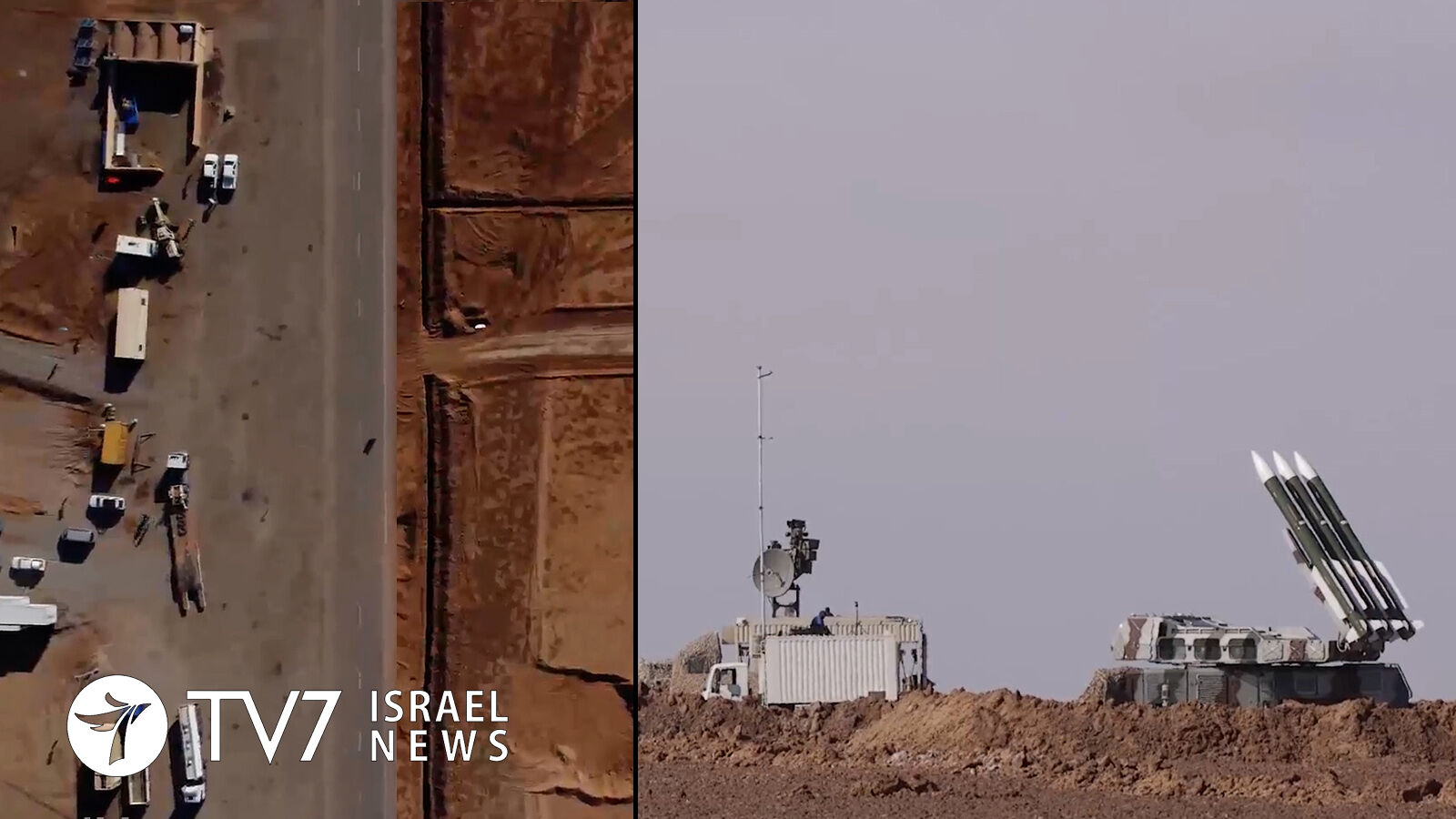Israeli Defense Minister Benny Gantz has presented a map of 10 different weapons facilities across Syria operated by the Islamic Republic.
By Erin Viner
“Iran transformed CERS into production facilities for mid and long-range, precise missiles and weapons, provided to Hezbollah and Iranian proxies. In other words, it became yet another Iranian front – a factory for advanced, strategic weapons,” said Minister Gantz, according to a statement TV7 obtained from the Israeli Ministry of Defense (IMoD).
The map of the CERS military sites revealed by Jerusalem’s top defense official included the underground Masyaf facility.
CERS, which is the acronym for the French term, Centre D’Etudes et de Recherches Scientifiques, is known as the Syrian Military Scientific Studies and Research Center (SSRC) in English. The military industrial complex is located near Hama about 200 kilometers north of the capital Damascus. Both it and the Masyaf facility in the Hama countryside have been targeted by multiple alleged Israeli strikes.
In remarks at the Jerusalem Post Annual Conference in New York City yesterday, Defense Minister Gantz charged that Iran’s transformation of the Syrian facilities was part of the “vision” of Islamic Revolutionary Guards Corps (IRGC) Commander Qassem Soleimani, who was assassinated in a targeted American drone strike on 3 January 2020 in Iraq. Soleimani, who headed the IRGC’s Quds Force that is primarily responsible for extraterritorial and clandestine military operations, had been the second most powerful man in Iran after only Supreme Leader Ayatollah Ali Khamenei.
“The sites that I reveal to you on the map, and in particular the underground site in Masyaf where precision missiles are manufactured, constitute a significant potential threat to the region and to Israel,” stressed Minister Gantz, warning that, “If this trend will not be stopped, within a decade, there will be advanced Iranian industries across the region, producing weapons and spreading terror.”
Turning to a related topic, Gantz referred to Iran’s insistence that it will not resume compliance with the 2015 Joint Comprehensive Plan of Action with world powers unless the International Atomic Energy Agency (IAEA) ends its probe into nuclear material uncovered at undeclared locations in the Islamic Republic.
Just days ago, the IAEA reported that the Islamic Republic has still failed to provide credible answers on the origin of uranium particles found at its undeclared Toorkooz-abad, Teheran & Marivan sites.
“Iran refuses to cooperate with international investigations, and it’s because they have something to hide. We deserve answers and Iran should be held accountable. We must ensure the authority and professional independence of the IAEA,” said Gantz, underscoring that Israeli intelligence confirms steady Iranian nuclear advancement in both its production capabilities and rate of enrichment.
“Iran is producing more and more advanced centrifuges – including at underground facilities where activities are prohibited. According to our assessments, should Iran decide to do so, it can reach 3SQ (or enough fissile material for a nuclear weapon) at 90% within a matter of weeks,” he underscored.
The Ayatollah regime has repeatedly vowed to annihilate the Jewish State. Israel has consistently warned that Iran has been trying to secure a windfall in sanctions relief at the Vienna Talks, without sufficiently rolling back nuclear bomb-making potential through its accelerated enrichment of uranium.
Gantz’ speech “presented a critical crossroads for the international community, which may lead to two distinct futures for the Middle East region by 2032,” said the IMoD, that presents two opposing scenarios. The first is one “in which Iran achieves its hegemonic ambitions and spreads terror and radicalism” that would only be “further strengthened should Iran attain a nuclear umbrella,” while the alternative would be “significant action” by the international community to transform the Middle East into an entity “that builds on the achievements of the Abraham Accords,” said the statement.
During his visit to the United States, Defense Minister Gantz completed a series of meetings at the United Nations Headquarters in New York, including UN Secretary General António Guterres and US Ambassador to the UN Linda Thomas-Greenfield.
During a later briefing for United Nations Security Council (UNSC) and Abraham Accord Ambassadors, Gantz further stressed his call for the international community to “ensure military deterrence, in addition to diplomatic and economic efforts,” including action by the UNSC “in face of the Iranian challenge.”
“The Number One cause for instability and terror in the Middle East is Iran. Iranian activities spread terror and could even spark an arms race. I am here because I believe that together we can prevent it – and the time to act is now. Iranian regional and global terror – whether it comes from Iran proper or via well-funded proxies – threatens our economies, energy resources, food security, trade, freedom of navigation and overall peace and stability. This will only worsen if Iran will have a ‘nuclear umbrella,’” he said.
